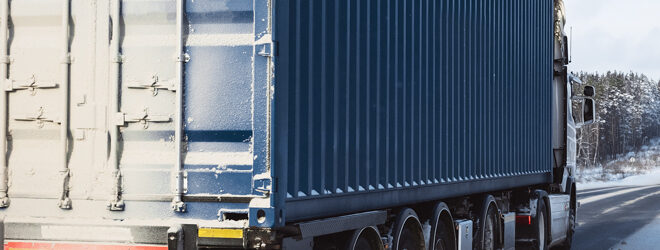A pandemic, like COVID-19, has brought on unprecedented challenges for businesses and employees across Canada. Growing public health concerns have resulted in the shutdown of many businesses, forcing them to transition to a work from home environment. While some sectors can transition to working from home, other workers, like those on a construction site, may not be able to.
All businesses – including those in construction – need to take a step back and assess whether staying open is a good idea. Then, once a decision is made, they need to take the necessary steps to either close down their site safely and ensure it’s secure while shut down, or keep their site open but ensure that all workers are as safe as possible.
If you’re closing down your site
First, check your province’s list of essential services to ensure your business qualifies as essential and therefore whether staying open is legal.
If your site must be closed down during the pandemic because of public health concerns, there are still a number of steps you should take to help things run smoothly and to protect your site and equipment from risks like theft.
Administrative work
Before closing down your site the Calgary Construction Association recommends that you review all contracts (and the clauses they contain) connected with the construction project. From there, outline the responsibilities associated with each contract and assign them to members of your team. This could include reviewing Notice provision clauses, Dispute Resolution clauses, and Force Majeure and Material Adverse Effect clauses. If any surety bonds have been procured in connection with your project, be sure they are also reviewed.
Organize copies of contract documents, submittals, reports, and records of meetings, and ensure that they are easily accessible for the owner, contractor, and owner’s consultant to review if necessary. You should also review the status of the following:
- Development approvals
- Building permits
- Payments for work pursuant to the contract
All those involved in the project must assess the progress of work to date and the impact a temporary closure will have on your timelines. Finally, even if you’re not sure when the site will reopen, set an anticipated date for resuming work and a new completion date.
Communication
Establish a communications plan and reporting protocol in the early stages of the shutdown process. This plan should include key contacts (with back-ups), the chain of communications (including any suppliers and the owner), and any processes for tracking and communicating the status of the business and employees. Once your site has been closed down, the communications plan should be reviewed regularly and updated when necessary.
Lock down the site
To ensure nothing goes wrong at the site during the shutdown, you should take the following steps:
Equipment
- All tools, equipment, materials, and machinery should be removed and secured off site.
- Any materials which cannot be removed should be secured to protect them from heavy winds.
- Combustible materials should be removed.
- Non-installed appliances should be removed.
- If some areas of the site are still operational, physical barriers should be set up separating unoccupied from occupied areas.
- Tower cranes should be inspected as per jurisdictional requirements and access should be secured.
Utilities
- The main water supply should be turned off and water should be drained from the plumbing system. Any pumping equipment or dewatering systems should be properly fueled and filled so that they operate without any workers present.
- Temporary space heaters should be turned off and removed.
- Fuel tanks should be emptied or removed from the site.
- Compressed gas cylinders should be removed.
Security
- Existing site security provisions should be reviewed to ensure that they are operational and maintained (e.g. surveillance systems).
- Gates into the site and any doors or entryways should be locked.
- Existing fire protection and detection provisions should be maintained.
- Structure should be braced, where applicable.
Waste
- Waste bins and receptacles should be emptied.
Lastly, even after securing your site for the closure, be sure to perform exterior and interior site visits every 72 hours, and to take detailed notes when you do.
Download our Temporarily Suspended Construction Site Checklist for:
If you’re keeping your site open
In the case where you decide to keep your construction site open, there are several ways you can help maintain the health and safety of workers. To minimize the impacts of COVID-19 and ensure business continuity, we recommend implementing various social distancing, cleaning, and detection measures.
Social Distancing
To effectively implement social distancing measures, identify which aspects of your business will be most impacted. This may include:
- Site orientations
- Training
- Tasks that involve workers to work in close proximity, i.e. carrying pipe or drywall
- Tasks that take place in areas where there is not enough space to maintain social distancing, i.e. a freight elevator or small room
Are there ways to modify these tasks to minimize contact between workers on your site? The Canadian Construction Association (CCA) recommends that in-person meetings consist of 6 people or fewer. A few ways you can achieve this and avoid overcrowding include:
- Arrange split/alternating shifts to avoid extensive interaction, with voluntary shift offset and time gaps between shifts
- Instruct employees to avoid working less than two meters from others for prolonged periods unless they absolutely must
- Stagger break and lunch schedules to minimize the number of people in one area
- Establish one-way staircases to minimize contact
Social distancing should also be done in breakrooms, washrooms, and other common areas. Where feasible, limit the use of supplies such as pens used to sign documents and the usage of coffee machines or water fountains.
If a worker has returned from travel outside Canada, they are now required by law to self-isolate for 14 days. Keep track of who on your team is on and off site (for example, who is fit to work, has called in sick, or is taking care of ill family members).
Cleaning
Thorough daily maintenance and cleaning of your site is an important way to reduce the risk of COVID-19 transmission. The Public Health Agency of Canada (PHAC) encourages businesses to clean highly touched surfaces in public areas frequently and promote hand washing.
In construction, where workers are touching and holding different materials every day, hand-washing is extremely important. The CCA suggests providing all workers with hand sanitizer stations, clear hand washing protocol, and disinfecting wipe products to wipe down workstations. All door handles and railing should also be wiped down twice a day with disinfectant. For more information on best cleaning practices, refer to the World Health Organization.
Detection
Many provinces are now offering free online self-assessment tools to help people diagnose their symptoms. A worker who appears to be showing flu-like symptoms such as fever, coughing, or congestion should self-isolate. If they are exhibiting signs of COVID-19, encourage them to take the detection test. They should not return to work until they have received medical clearance to do so. For more information, refer to the PHAC website for the latest information.
We recommend that all workers complete a daily or weekly checklist with questions relating to COVID-19 and their health. If workers answer yes to any of the items on the list, they should not be admitted to the construction site and be required to self-isolate for 14 days. These checklists can be administered by the appointed site guard or health and safety representative at the site entrance.
Stay informed
It is critical that all workers are aware of the measures in place to help stop the spread of COVID-19 on-site. This includes clear signage around the site, updates on the latest developments, guidelines from local health authorities, and access to self-identification screening tools. Because information about the virus in constantly changing, so is the general understanding of best practices to reduce virus transmission.
Business owners, contractors, and workers should regularly refer to their local or regional construction association for the most up-to-date information. The Canadian Construction Association (CCA) has released an extensive pandemic and business continuity planning guide, along with a dedicated landing page listing resources from local construction associations.
To learn more about what support is available for your business, you can also refer to our COVID-19 resource page.
Take care of your construction site, whether it remains open or closes
As the pandemic continues to present challenges for business, the health and safety of your employees is critical. Stay informed, and follow guidelines established by your local and provincial government. Refer to the technical resources available from the Canadian Construction Association in pandemic planning and preparedness. Access our Business Continuity Planning Guide today to learn more about how to plan for business interruptions, and visit our contractors insurance page for a list of coverage options available to help protect your site.




